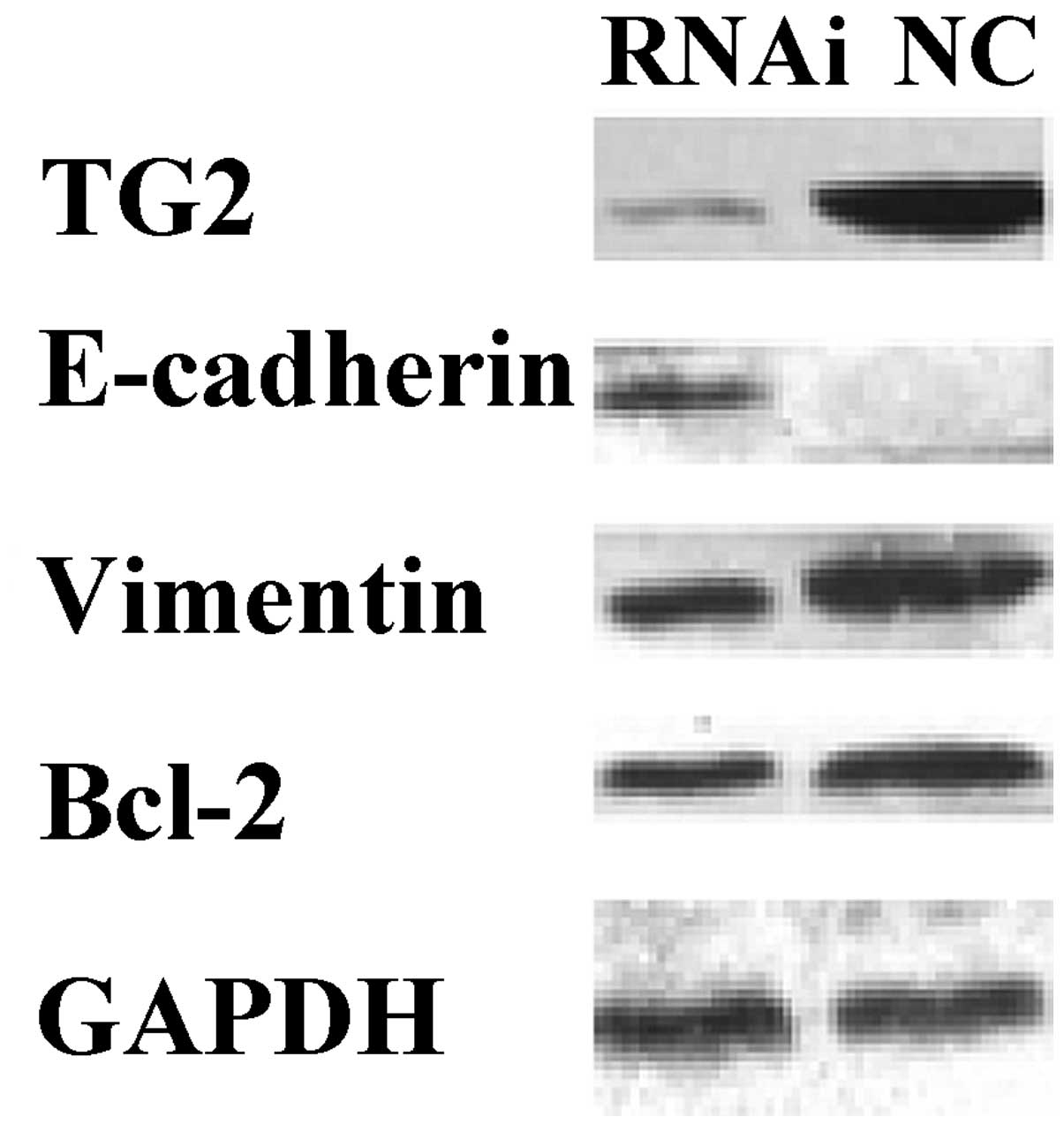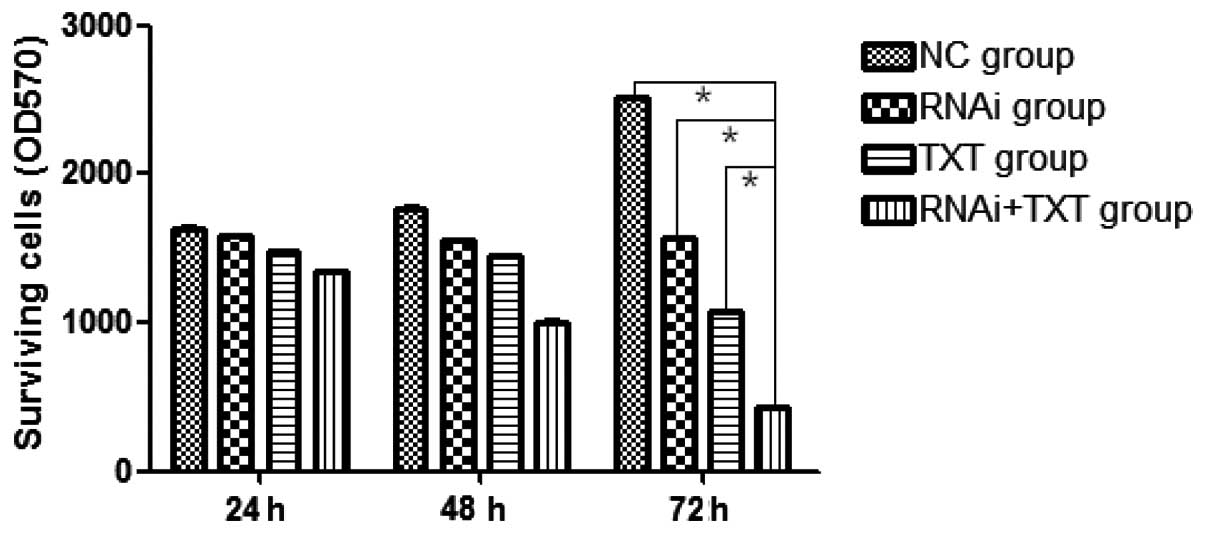Silencing of TGM2 reverses epithelial to mesenchymal transition and modulates the chemosensitivity of breast cancer to docetaxel
- Authors:
- Published online on: August 12, 2015 https://doi.org/10.3892/etm.2015.2679
- Pages: 1413-1418
Metrics:
Total
Views: 0 (Spandidos Publications: | PMC Statistics:
)
Total PDF Downloads: 0 (Spandidos Publications: | PMC Statistics:
)
Abstract
Epithelial to mesenchymal transition (EMT) plays a critical role in drug resistance. The aim of the present study was to further elucidate its role by examining the effect of tissue transglutaminase (TG2) on EMT and drug resistance in breast cancer. An antisense lentiviral (LV) short hairpin (sh)RNA construct specific to the TG2 gene (TGM2) was designed, synthesized and stably transfected into MDA‑MB‑231 cells to silence TGM2 by RNA interference (RNAi). The transfected cells expressed low levels of TG2 and constituted the RNAi (TGM2‑shRNA) group. A control (NC) group was also established by transfecting MDA‑MB‑231 cells with scrambled shRNA. The expression levels of TG2, E‑cadherin, vimentin and B‑cell lymphoma (Bcl)‑2 in the cells were examined via western blotting. The transfected MDA‑MB‑231 cells were divided into four groups, two of which were treated with doxetaxel (TXT): NC, RNAi, TXT and RNAi + TXT groups,. Cell proliferation was analyzed by MTT assay and cell apoptosis was detected by flow cytometry. An in vivo assay was also conducted, in which MDA‑MB‑231 cells transfected with scrambled shRNA or TGM2‑shRNA were subcutaneously implanted into nude mice. After 2 weeks, TXT or vehicle was intraperitoneally administered at a dose of 10 mg/kg on day 1 of every week and tumor growth was monitored. Following the silencing of TGM2 in the MDA‑MB‑231 cells, the cells showed changes in morphology, indicating that an increased expression of TG2 was associated with a mesenchymal morphology. Transfection of the cells with TGM2‑shRNA affected the expression of TG2, E‑cadherin, vimentin and Bcl‑2. In the MTT assay, the proliferation of MDA‑MB‑231 cells was significantly inhibited in the RNAi group compared with the control group (P<0.05), and the inhibitory effect increased in a time‑dependent manner. Following treatment with TXT for 48 h, apoptosis was significantly promoted in the RNAi + TXT group compared with that in the other groups (P<0.05). Measurement of the tumors in the nude mice indicated that the combination of RNAi and TXT brought about a stronger antitumor effect than either treatment alone. These results suggest that the downregulation of TG2 reversed EMT and modulated the chemosensitivity of breast cancer to TXT. TG2 may be an important predictive and prognostic factor for the treatment efficacy of chemotherapy in patients with breast cancer.
















